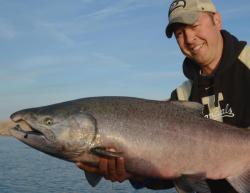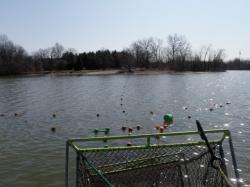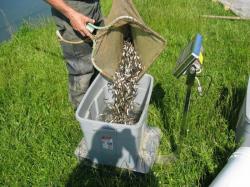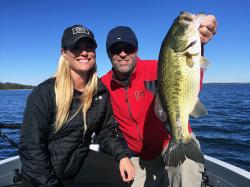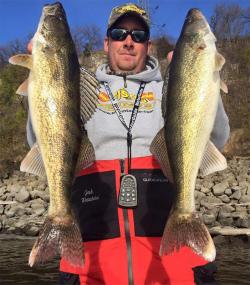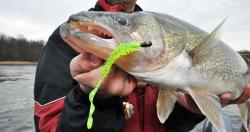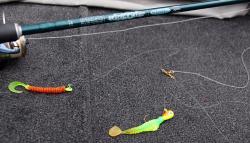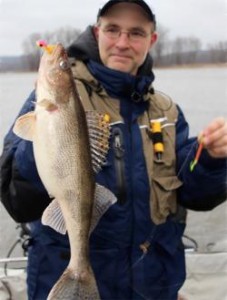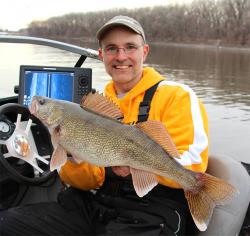Managing Chinook Seasons Is A Constant Work In Progress
By Roger Phillips, Idaho Fish and Game public information specialist
from The Fishing Wire
That number varies wildly from year to year, and Fish and Game must balance the wants of anglers with ensuring enough Chinook are available to keep hatcheries operating, protect wild fish listed under the Endangered Species Act, and abide by agreements with other states and tribes to share the harvest of hatchery Chinook.
It’s a tricky mix of management that can complicate the answer for folks who just want to know how long salmon season will last.
The good news
Idaho has had an unprecedented run of chinook fishing seasons. This year will be the 16th straight year Fish and Game has provided a season, which is the longest unbroken streak dating back to 1954. Before then, salmon fishing was largely unregulated.
Chinook fishing kicks off with the spring run, and there’s fishing in the Snake River, Clearwater River and Salmon River and several tributaries. Over the last 20 years, spring chinook runs have averaged 54,160 fish annually. The previous 20 years (1976-95), the spring runs averaged 17,646, and fishing seasons were sporadic and often short-lived.
Last year, about 95,300 hatchery chinook crossed Lower Granite Dam about 25 miles downstream from Lewiston. Non-tribal anglers in Idaho harvested 22,075 of them during the spring and summer seasons.
The forecast for this year is 66,100 hatchery fish to cross Lower Granite, which means about 24,000 will be available for sport anglers to harvest. But biologists won’t know how exactly how many can be harvested until fish start reaching Idaho, and the run has just started.
Forecasting the season
Each winter, Fish and Game biologists predict the upcoming run based on the return of jacks from the previous year. Young salmon, known as smolts, migrate to the ocean each spring at about two years old. Those smolts grow in the ocean and return over the next three years.
Some chinook return to rivers after spending only a year in the ocean. They’re known as “jacks” because they’re almost all males, and younger than most other salmon returning. Most chinook that return to Idaho spend two years in the ocean, so the number of jacks is an indicator of how many “two-ocean” chinook will return the following year.
Finally, a small percentage returns after three years in the ocean, and on rare occasions, four years.
Biologists use last year’s jack salmon return to forecast the size of this year’s run, and that information allows Fish and Game to set a salmon season before the first Chinook arrives in Idaho.
Biologists also monitor the run as fish move past fish counters at the dams on the Columbia and Snake rivers, and they use fish embedded with tiny electronic tags known as PIT tags to determine where the fish are headed.
“We’re able to make the forecast of fish returning to each hatchery or river section based on PIT-tagged fish,” Fish and Game’s anadromous fish manager Pete Hassemer said.
Spring run
Chinook start crossing Lower Granite Dam in April, but the peak usually hits in May. That’s when Fish and Game closely watches the number of fish arriving in Idaho, where they’re heading, and how many fish anglers are catching.
Since the seasons and limits were based on a forecast, it’s important to track the actual return and harvest by anglers. Small daily bag limits help keep the harvest within quotas and spread the fishery over a larger area and ensure enough fish are available for anglers farther upstream.
“We’re catching fish in the early part of the run without knowing exactly how many fish are coming back,” Hassemer said. “Fishing can be really good, and there’s a limited number of fish available to anglers, so they can catch those fairly quickly.”
How’s fishing?
It’s more than a curious question – it’s how Fish and Game determines how many fish are caught each day and how long the season lasts. Fish and Game personnel count anglers and interview them throughout the fishery to see how many fish they’re catching.
“Our creel program has been designed to ensure we conduct enough angler counts and interview enough anglers to have a good understanding of how many fish are caught each day,” Hassemer said.
Fish and Game communicates weekly with the other states, tribes and federal agencies during the season to share information. By Tuesday of each week, biologists have a good idea if there are enough fish remaining to sustain fishing through the following weekend.
Fish and Game posts updated information on its web page so anglers can see how many have been caught. They can find that information at http://fishandgame.idaho.gov/ by looking the under “Chinook Salmon” under the Fishing tab. (Direct link: http://fishandgame.idaho.gov/public/fish/?getPage=114).
The goal is to provide good information for anglers so they have a better understanding where fish are being caught, how good the fishing is, and when closures might occur.
“We generally avoid closing on Friday because we want to give anglers as much opportunity as we can,” he said.
Different rivers, different fisheries
But anglers should remember that their portion of the Chinook return can be caught very quickly, especially when fishing is good and the harvest share is modest.
That’s often the case during popular river stretches. On the Lower Clearwater River, the season typically lasts about 15 days after the first fish arrive. On the South Fork of the Salmon River, the harvest share can be caught within a few days of the peak run arriving.
“Once fish start arriving in the smaller streams and the water is low and clear, anglers are quite successful,” Hassemer said.
Fishing seasons on the Lower Salmon and Little Salmon rivers tend to last longer and are a little more predictable.
Snowpack and spring run-off influence the timing of the runs. Spring chinook tend to follow peak spring run-off, so when the Salmon River starts receding, usually in late May, early June, it’s time to go salmon fishing.
Biologists also carefully watch tag data to ensure fish bound for hatcheries in the Upper Salmon aren’t overharvested lower in the river system. Long-term data shows about 90 percent of the chinook harvested in the Salmon River around Riggins and White Bird are bound for the Rapid River Hatchery.
A moving target
Considering forecasts rarely predict the exact number of fish, biologists keep a watchful eye on the actual return. Sometimes late-returning fish will allow them to keep the season open a little longer. Other times, fewer fish than expected return, and the season is cut short.
But Fish and Game’s goal is to ensure anglers get an equitable share of the available harvest.
“We really try to make sure we don’t close too early and have anglers off the water when they could be fishing for these prized salmon,” Hassemer said.
